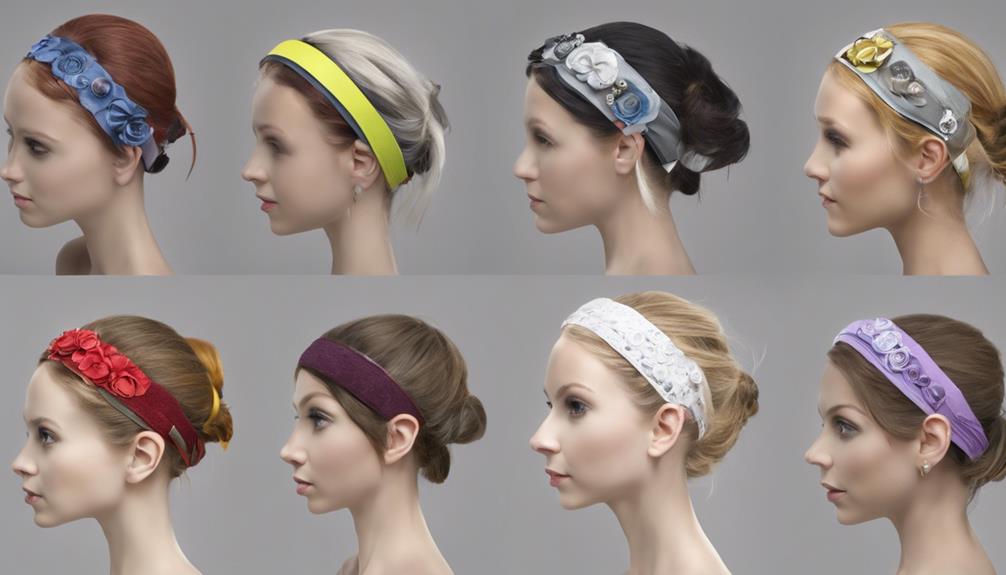Have you ever wondered about the intricacies of effectively programming cochlear implants? Understanding the specifics of each stage is crucial, from assessing the unique hearing needs of the patient to fine-tuning speech coding methods.
But how do we ensure optimal outcomes in pediatric patients? Let's explore the essential 10 steps that pave the way for successful cochlear implant programming, offering insights into the meticulous process that underpins improved auditory experiences for children.
Key Takeaways
- Understand patient's hearing needs and history for tailored programming.
- Select optimal device and customize settings for improved outcomes.
- Set appropriate thresholds and comfort levels for long-term success.
- Regular follow-up and adjustments enhance patient satisfaction and outcomes.
Understanding Patient's Hearing Needs
When assessing a patient's hearing needs for cochlear implant programming, it's crucial to consider various factors such as age, the underlying cause of hearing loss, and the duration of deafness. Understanding the individual's auditory profile is essential in determining the most suitable speech processing strategy. We must tailor the cochlear implant mapping parameters meticulously to meet the person's specific hearing thresholds and comfort levels for optimal speech perception. The age at implantation plays a significant role in programming requirements, influencing adjustments in T- and C-levels, especially for younger recipients at different developmental stages like infants, toddlers, preschoolers, and school-aged children.
Collaborating closely with the patient and their family allows us to comprehend their unique auditory challenges and preferences. By involving them in the decision-making process, we can guide the programming towards personalized outcomes that align with their communication goals. This meticulous approach ensures that each cochlear implant recipient receives a customized programming experience tailored to their individual needs, fostering better auditory development and overall satisfaction.
Pre-Programming Assessment and Evaluation

Before commencing the programming of cochlear implants, we meticulously review the patient's history, examine the results of audiological tests, and evaluate their speech perception abilities. These initial steps provide us with crucial insights into the individual's auditory capabilities and lay the foundation for making informed programming decisions.
Patient History Review
Conducting a comprehensive pre-programming assessment involves carefully reviewing the patient's medical history, hearing loss etiology, and previous auditory interventions. By evaluating the patient's hearing abilities, speech recognition scores, and developmental factors, we gain crucial insights for programming the cochlear implant effectively.
Understanding when the patient received the implant and any developmental considerations is vital for tailored programming. Additionally, factors like electrode positioning and impedance measures play a significant role in optimizing programming parameters. By utilizing this information, we can create individualized cochlear implant maps that aim to enhance speech perception outcomes.
This detailed patient history review forms the foundation for successful cochlear implant programming, ensuring personalized care for each individual.
Audiological Exam Results
Incorporating audiometric test results from the pre-programming assessment is essential for tailoring cochlear implant settings to the individual's auditory needs and maximizing speech perception outcomes.
When analyzing audiological exam results, we consider speech perception tests such as CNC word scores to establish baseline performance.
Evaluation of subjective benefit using the SSQ-C questionnaire helps determine individual satisfaction with current device settings.
Objective data derived from tests like CNC word scores play a crucial role in guiding programming decisions by assisting in setting appropriate stimulation levels for optimal outcomes.
This comprehensive evaluation before programming ensures personalized adjustments that meet the patient's specific needs effectively.
Speech Perception Evaluation
Our initial focus in the speech perception evaluation for cochlear implant programming centers on assessing the candidate's baseline speech recognition abilities without relying on the device. Utilizing tools like the CNC word test during the pre-implant evaluation allows us to gather essential data on the individual's speech understanding capabilities before implantation.
These evaluations play a vital role in establishing realistic expectations for post-implant outcomes and help in determining appropriate programming goals. By conducting thorough and detailed speech perception assessments, we can effectively tailor the cochlear implant settings to optimize the candidate's speech understanding post-implantation.
Pre-programming assessments are pivotal in identifying the potential benefits of a cochlear implant for the individual and in setting achievable programming objectives.
Selection of Optimal Cochlear Implant Device

When selecting the optimal cochlear implant device, it's crucial to carefully assess patient factors such as age, severity of hearing loss, and anatomical considerations. Evaluating the features and capabilities of different cochlear implant devices is essential to match the patient's needs and lifestyle effectively. Consulting with the patient's healthcare team, including audiologists and otolaryngologists, plays a key role in determining the most suitable cochlear implant device for the individual. It's important to review the compatibility of the cochlear implant device with accessories, such as speech processors and audio streaming devices, to enhance the user experience.
Consider patient factors
Evaluate device features and capabilities
Consult with the healthcare team
Staying informed about advancements in cochlear implant technology is also crucial to offer patients the most up-to-date and effective options for their hearing needs. By following these steps diligently, the process of selecting the optimal cochlear implant device can be a more precise and tailored experience for each patient.
Mapping and Electrode Configuration

Mapping and electrode configuration play pivotal roles in optimizing speech perception for cochlear implant recipients. In cochlear implants, mapping involves setting the electrical parameters, such as threshold (T) and comfortable (C) levels, to ensure that the stimulation is appropriately adjusted for each individual.
The electrode configuration is equally crucial as it determines the stimulation levels reaching specific regions of the cochlea. This tailored configuration, influenced by factors like etiology and age at implantation, significantly impacts the effectiveness of cochlear implant programming, especially in pediatric cochlear implant users.
Understanding the intricate relationship between electrode configuration and stimulation levels is essential for maximizing outcomes in this specific group of recipients. By carefully adjusting the mapping and electrode settings, we can enhance speech perception and facilitate auditory rehabilitation, ultimately improving the quality of life for cochlear implant patients.
This meticulous approach to mapping and electrode configuration is fundamental in achieving successful outcomes in cochlear implant programming.
Setting Threshold and Comfort Levels

When setting threshold and comfort levels for cochlear implants, we focus on determining the patient's minimal sound detection threshold and maximum comfortable stimulation levels.
This process involves establishing the lowest electrical intensity for sound detection (T-levels) and the highest tolerable stimulation without discomfort (C-levels).
Adjusting these levels accurately is crucial for optimizing the cochlear implant system's dynamic range and ensuring effective speech perception and comfortable listening experiences.
Threshold Adjustments
In programming cochlear implants successfully, setting the threshold and comfort levels is a critical step that ensures optimal auditory input and patient comfort. Proper adjustment of T- and C-levels is essential in cochlear implant programming to prevent under or overstimulation. Fine-tuning T- and C-levels based on individual responses to electrical stimulation is key for successful outcomes.
- Adjusting T-levels to the lowest level for sound detection
- Setting C-levels at the highest comfortable electrical stimulation
- Determining the range of electrical stimulation for optimal function
Comfort Level Mapping
For successful programming of cochlear implants, achieving optimal auditory input and patient comfort requires meticulous calibration of threshold and comfort levels. Comfort level mapping involves setting threshold (T) levels, which determine the softest sounds a cochlear implant user can detect, and comfort (C) levels, which ensure a pleasant listening experience without being too loud.
Proper adjustment of T and C levels is essential to optimize the dynamic range of the cochlear implant system, enabling users to perceive a wide range of sounds effectively. During mapping sessions, T and C levels are fine-tuned based on individual user feedback to enhance speech signal comprehension.
Regular monitoring and adjustments of these levels are crucial to accommodate changes in auditory perception and maintain long-term programming success for cochlear implant users.
Fine-Tuning Speech Processor Parameters

After adjusting the threshold (T) levels to the minimum required for auditory detection, the next step in fine-tuning speech processor parameters is optimizing comfortable (C) levels to ensure clear and comfortable sound perception. Balancing these levels is crucial in establishing a suitable dynamic range for effective cochlear implant use. To achieve this balance, we focus on individualized programming that considers factors such as age, etiology, and electrode positioning to maximize speech understanding. Regular monitoring and adjustment of speech processor parameters are essential for maintaining optimal cochlear implant performance over time.
- Balancing T and C Levels: Establishing an appropriate dynamic range is key for effective cochlear implant function.
- Individualized Programming: Accounting for various factors ensures personalized settings for improved speech perception.
- Regular Monitoring and Adjustment: Ongoing monitoring and adjustments are vital to maintain optimal cochlear implant performance.
Implementing Speech Coding Strategies

When implementing speech coding strategies for cochlear implants, we focus on selecting optimal parameters that align with the individual's auditory requirements.
Understanding speech perception plays a crucial role in customizing coding strategies to enhance the user's overall auditory experience.
Fine-tuning these strategies is essential to optimize speech understanding in various listening environments.
Selecting Optimal Parameters
In optimizing cochlear implant programming for effective speech processing, selecting optimal parameters such as stimulation rate, number of active electrodes, and pulse width is crucial to maximizing speech perception in users. When implementing speech coding strategies, considerations for these parameters are vital to tailor the auditory experience for each individual.
- Stimulation Rate: Adjusting the rate at which electrodes deliver signals can impact the user's ability to distinguish between different sounds and improve speech clarity.
- Number of Active Electrodes: Determining the number of electrodes that actively participate in transmitting sound information influences the level of detail perceived in speech.
- Pulse Width: Modifying the duration of electrical pulses can enhance the temporal coding of auditory information, aiding in better speech recognition.
Understanding Speech Perception
To enhance speech perception in cochlear implant users, implementing speech coding strategies involves tailoring electrical stimulation patterns to individual needs for optimal communication outcomes. Speech coding strategies like ACE, SAS, and MP3000 play a crucial role in converting acoustic signals into tailored electrical patterns, impacting speech clarity and understanding.
Adjusting programming parameters such as stimulation rate, active electrodes, and electrode-to-neuron interface is essential for optimizing speech perception. Fine-tuning these strategies based on individual preferences and speech perception outcomes can significantly improve communication abilities in cochlear implant users.
Understanding the intricate relationship between speech coding strategies and speech perception outcomes is vital for successful cochlear implant programming and maximizing speech understanding in users. It's through these tailored approaches that we aim to enhance the communication experience for each individual.
Customizing Coding Strategies
Regularly assessing and fine-tuning coding strategies is crucial for optimizing speech perception and auditory performance in cochlear implant recipients. When customizing coding strategies, we focus on the following key aspects:
- Individualized Selection: Tailoring coding strategies based on factors like age, auditory history, and speech perception abilities.
- Stimulation Parameters Optimization: Adjusting parameters such as rate, number of channels, and electrode discrimination to enhance speech perception.
- Programming Considerations: Implementing coding strategies like CIS, ACE, or HiRes 120 to improve speech understanding, music appreciation, and overall satisfaction with the cochlear implant system.
Verifying and Validating Programming Settings

When ensuring the successful programming of cochlear implants, a critical step involves meticulously verifying and validating the programming settings to optimize auditory nerve contact and hearing performance. Verification entails checking electrode impedance levels to guarantee proper contact with the auditory nerve, ensuring effective stimulation. Validation is essential, including assessing threshold (T) and comfort (C) levels to fine-tune hearing performance for the individual. Utilizing objective measures like Neural Response Telemetry (NRT) aids in verifying programming accuracy and electrode functionality, enhancing overall outcomes.
Real-time speech testing during programming sessions plays a crucial role in confirming appropriate stimulation levels for optimal speech understanding. Additionally, regular follow-up appointments are scheduled to validate programming settings and make necessary adjustments based on patient feedback and performance. This meticulous approach not only ensures the initial success of programming but also allows for ongoing optimization of cochlear implant settings to meet the unique needs of each patient effectively.
Counseling and Education for the Patient

In ensuring optimal outcomes for cochlear implant patients, counseling and education play a pivotal role in preparing individuals and their families for the programming process. Educating pediatric cochlear implant patients and their caregivers about the programming journey is essential for success.
Providing information on the benefits of cochlear implants and discussing realistic expectations can help alleviate concerns and build confidence.
Educating patients about the importance of active participation in programming sessions can lead to better outcomes and improved communication skills.
Addressing potential challenges, such as initial adjustment periods and follow-up appointments, can empower patients to navigate the programming process effectively.
Follow-Up and Continued Monitoring

To ensure optimal outcomes for cochlear implant patients, meticulous follow-up and continued monitoring are imperative for fine-tuning programming settings and addressing any evolving needs. Regular follow-up appointments play a crucial role in monitoring and adjusting cochlear implant programming.
During these visits, clinicians track changes in auditory responses and speech perception over time, allowing for adjustments to stimulation levels that can optimize outcomes, especially for pediatric patients. Behavioral observations and feedback from both the patient and caregivers guide ongoing modifications to the programming.
Long-term success with cochlear implants is heavily dependent on consistent follow-up care and monitoring to promptly address any programming issues or changes in hearing needs that may arise. By staying vigilant with follow-up appointments and monitoring, clinicians can ensure that cochlear implant programming remains tailored to each patient's unique requirements, ultimately leading to improved auditory outcomes and overall satisfaction.
Frequently Asked Questions
What Are Cochlear Implant Signal Coding Strategies?
Cochlear implant signal coding strategies involve various methods like Continuous Interleaved Sampling (CIS), Advanced Combination Encoder (ACE), and Spectral Peak (SPEAK). These strategies convert sound signals into electrical impulses to stimulate the auditory nerve.
ACE, for example, aims to enhance speech understanding by providing detailed information to the cochlea. CIS strategy offers a continuous representation of sound frequencies, improving speech perception.
These strategies are vital for maximizing speech perception and communication abilities in cochlear implant recipients.
What Is the ACE Coding Strategy for Cochlear Implants?
We use the ACE coding strategy to optimize cochlear implant programming. It focuses on adjusting electrical parameters to enhance speech perception.
ACE, short for Automatic, Comfort, and Electric settings, balances gain control, comfort levels, and stimulation for better auditory experiences. Fine-tuning these settings improves clarity and overall performance.
Careful threshold and comfort level adjustments are crucial for successful implementation and improved speech perception outcomes.
How Do You Set up a Cochlear Implant?
When setting up a cochlear implant, we ensure the hardware is connected correctly to the programming equipment. We check the battery status and sound processor functionality.
It's crucial to disable any built-in Bluetooth features and use Cochlear-provided Bluetooth adapters for reliable communication. Pairing the programming equipment with necessary devices for seamless data transfer is essential.
After programming, follow recommended steps to disconnect the processor for optimal results.
What Is the Activation Process for a Cochlear Implant?
When activating a cochlear implant, we set stimulation levels by adjusting threshold (T) and comfortable (C) levels to ensure appropriate loudness perception. This process typically occurs a few weeks after surgery to allow for healing and electrode integration.
Mapping sessions focus on customizing electrical parameters based on individual needs and responses. Stimulation levels are fine-tuned over multiple sessions to optimize speech clarity and sound quality.
Conclusion
In conclusion, successfully programming cochlear implants in pediatric patients requires a meticulous approach and attention to detail. Each step, from understanding the patient's needs to follow-up monitoring, plays a crucial role in achieving optimal outcomes.
Like pieces of a puzzle coming together, the process of programming cochlear implants is a delicate balance of science and art, ultimately leading to improved hearing and quality of life for young patients.











